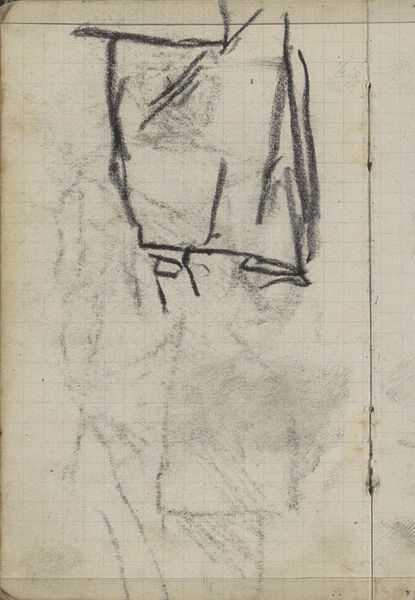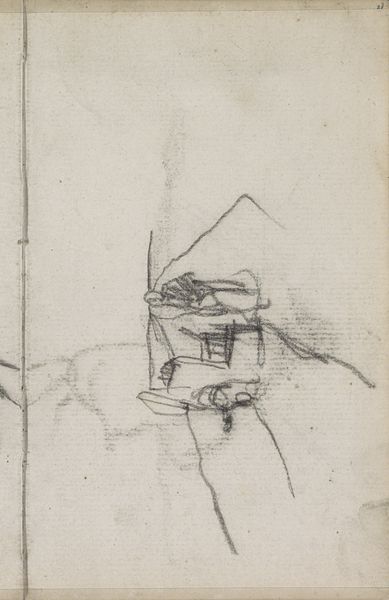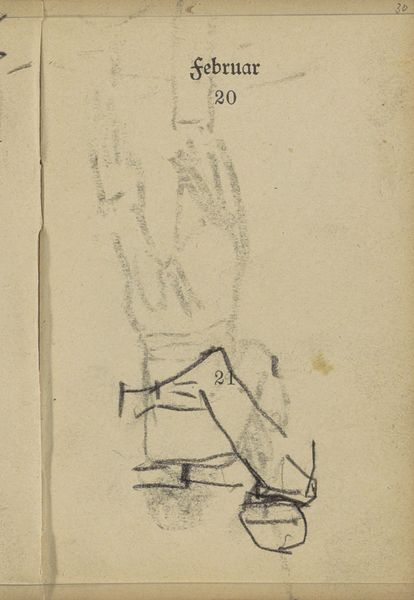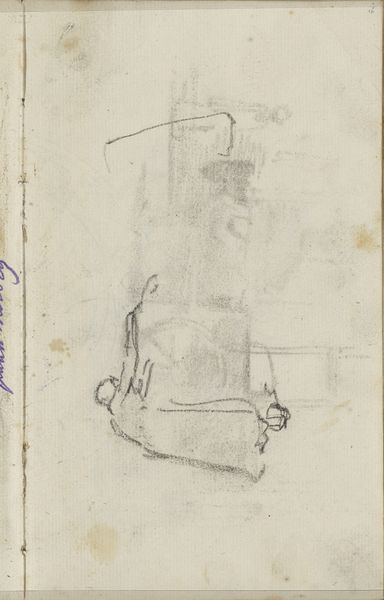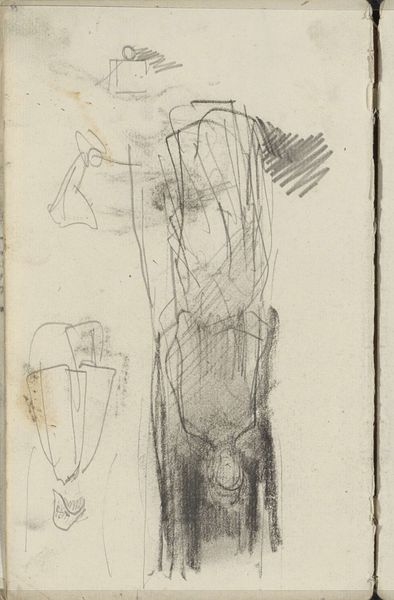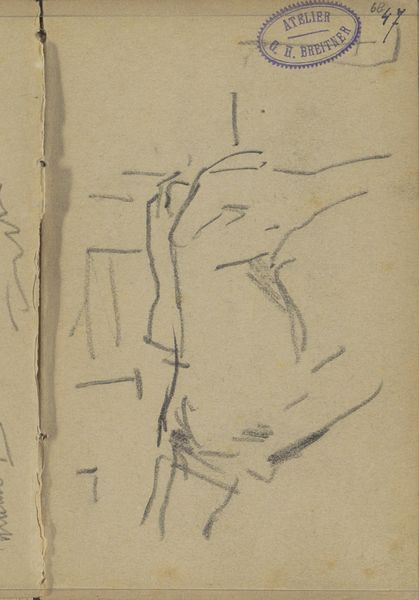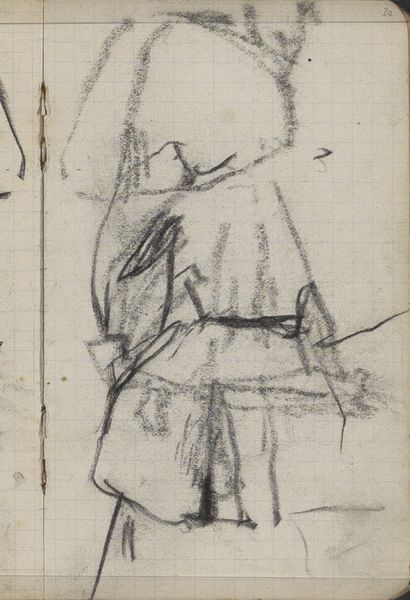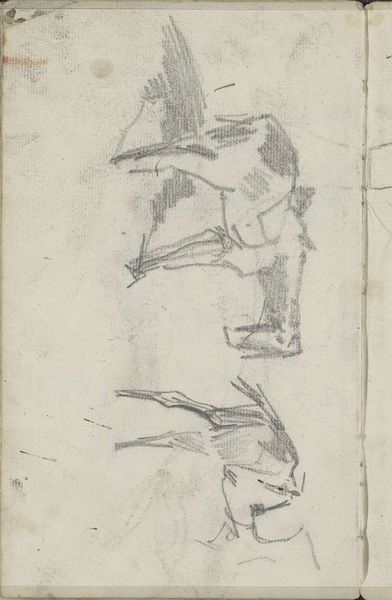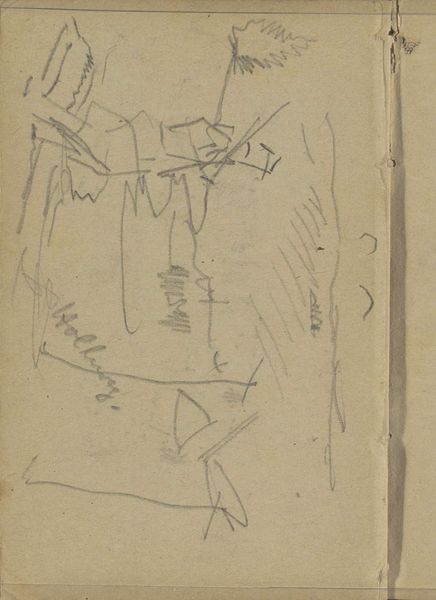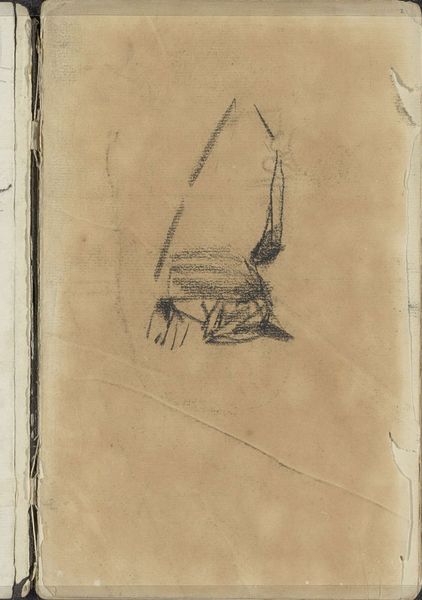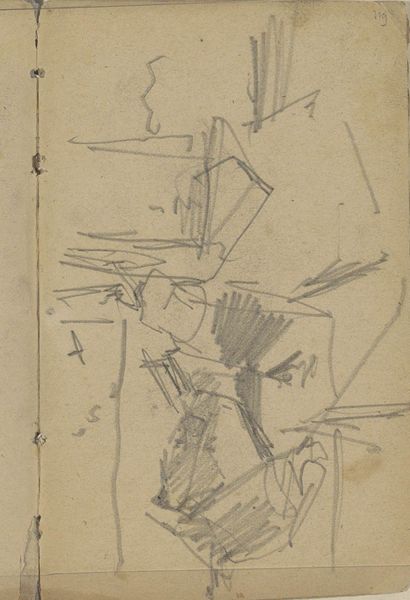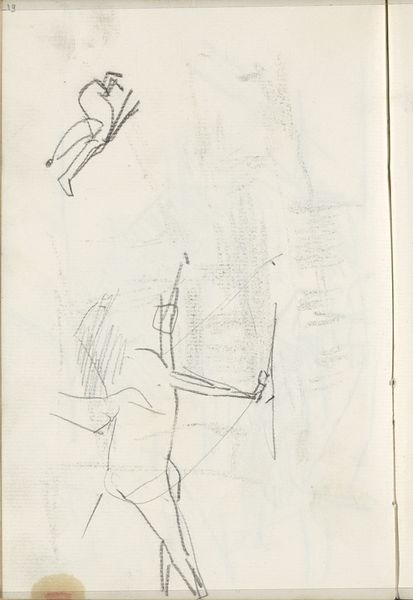
#
amateur sketch
#
toned paper
#
light pencil work
#
sketch book
#
personal sketchbook
#
idea generation sketch
#
sketchwork
#
horse
#
sketchbook drawing
#
storyboard and sketchbook work
#
sketchbook art
Copyright: Rijks Museum: Open Domain
Curator: Here we have a sketchbook page, entitled "Paard," meaning "Horse," by George Hendrik Breitner, dating from 1893. It's housed right here at the Rijksmuseum. Editor: It's a fleeting impression, almost a ghost of a horse. A quick study. There's something very vulnerable about it, like a captured moment of precarity. Curator: Breitner was known for his street scenes of Amsterdam. This seemingly simple sketch is, in my opinion, crucial for understanding his artistic process. His sketchbooks reveal his intimate observation and how he captured movement and form before translating it into his larger works. This particular sketch reflects his engagement with urban life, capturing working horses which would have been so common in the streets he documented. Editor: Exactly! The urban context is critical. Horses in that era weren’t just beasts of burden, but also signs of economic power and industrial development. Seeing them represented this way, unfinished and raw, also speaks to the realities of animal labour often hidden. The amateur sketch quality subverts the expected grandeur associated with these animals, challenging social and economic structures. Curator: Some might argue Breitner wasn't deliberately challenging those structures, but reflecting the everyday without romanticism. His art aligned with a growing interest in the lives of ordinary people, making art relatable and breaking away from academic traditions that privileged grand historical or mythological scenes. This sketch provides more opportunities to reflect upon a modern urban environment captured through art. Editor: Precisely, it’s this turn toward the ordinary, presented without idealization, that makes it so impactful. And by showing a ‘working’ animal in this stripped-down way, it makes visible something normally unseen, drawing attention to issues like social injustice or economic exploitation, and opens pathways of questioning art history. Curator: Absolutely. Looking at his rapid strokes, the bare essence of the animal...it makes one consider Breitner’s larger contribution to visual culture beyond grand artworks or museum showstoppers. Editor: Yes, and thinking about Breitner's choice of sketchbooks provides valuable space for artistic research into identity, gender, or political contexts. It gives an immediacy to art.
Comments
No comments
Be the first to comment and join the conversation on the ultimate creative platform.
